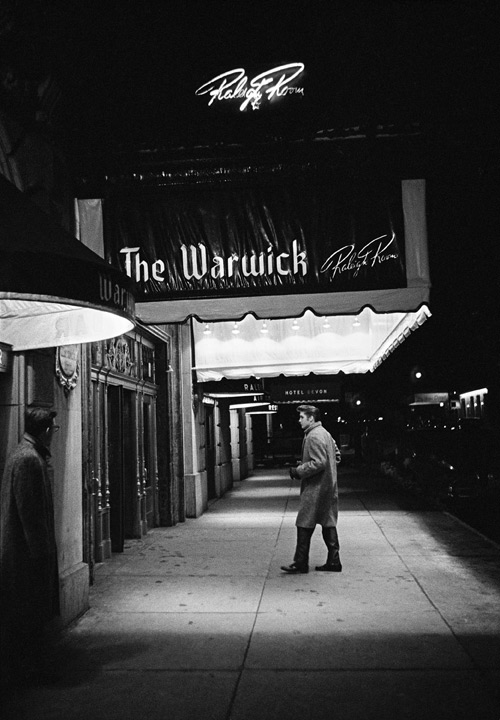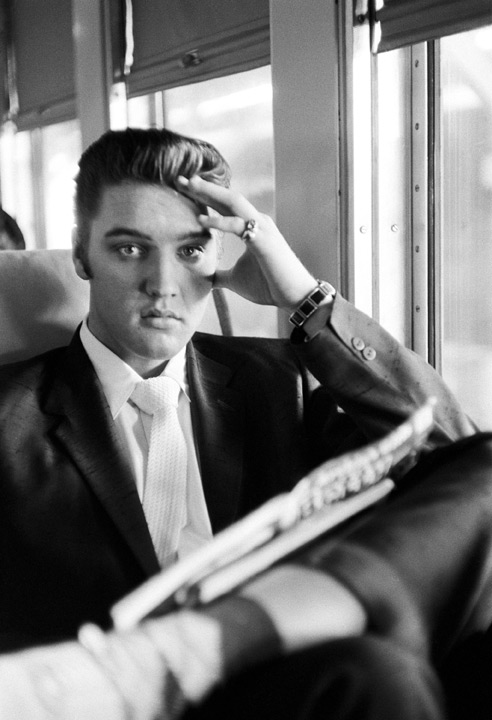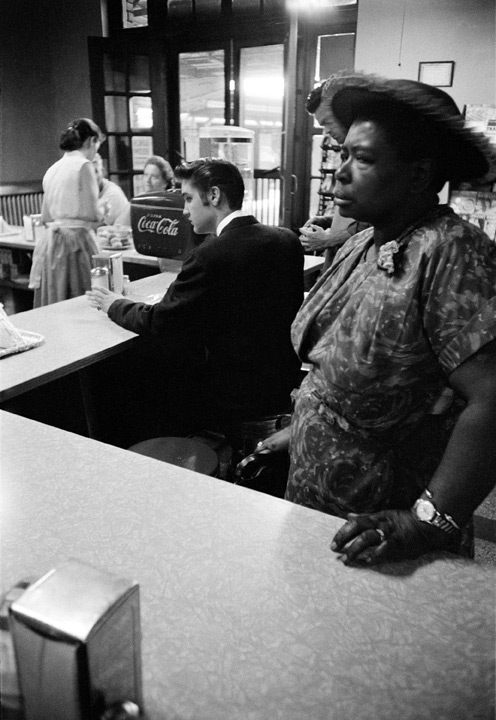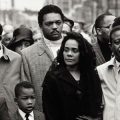Before he was King: Elvis at 21
In 1956, RCA Victor signed a promising young recording artist named Elvis Presley and freelance photojournalist Alfred Wertheimer was hired to shoot promotional photos of the 21-year-old. Wertheimer’s instinct to “tag along” with the artist after the assignment produced images that provide a rare look at Presley just before he exploded onto the scene and became one of the most exciting and influential performers of his time. “Elvis at 21: Photographs by Alfred Wertheimer,” a new Smithsonian traveling exhibition, presents 56 of these striking images and opens at the National Portrait Gallery in Washington, D.C., Oct. 23.

Entering The Warwick. Between the afternoon rehearsal and the evening performance of “Stage Show,” hosted by Tommy and Jimmy Dorsey, Elvis returns to his hotel to rest and freshen up. New York City. March, 17, 1956. © Alfred Wertheimer. All rights reserved.
The 1956 photographs from the “Elvis at 21” exhibition show more than a musician on the rise. The images suggest the calm before the storm—the simple and complacent American society before Elvis’ impact on youth and popular culture created a swelling teen consumer market as radio, recordings and movies became the new definition of entertainment.
Wertheimer had unparalleled access and documented Presley on the road, backstage, in concert, in the recording studio and at home in Memphis, Tenn. “Colonel” Tom Parker, Presley’s manager, restricted contact just a short time after these photographs were taken. The photographs document a remarkable time when Presley could sit alone at a drugstore lunch counter.

Elvis, Steve Allen and The Basset Hound. Steve Allen, and Elvis discuss in rehearsal how Elvis will sing his song, “Hound Dog,” to a basset hound on a pedestal wearing a top hat. Allen wanted to avoid the controversy that occurred after Elvis swiveled his hips on “The Milton Berle Show.” NBC Television, Hudson Theater, New York City. July 1, 1956. © Alfred Wertheimer. All rights reserved.
“[French photojournalist] Henri Cartier-Bresson was known for photographing the decisive moment, that moment when everything falls into place,” Wertheimer has explained. “But I was more interested in the moments just before or just after the decisive moment.”
Wertheimer was up close to capture Presley’s flirtatious encounter with a young woman backstage in Richmond, Va. He was in the New York City recording studio on the historic day Presley recorded “Don’t Be Cruel” and “Hound Dog.” Both songs hit No. 1 on the charts, the first and only time a single record would achieve this distinction.

Going Home. Elvis on the Southern Railroad between Chattanooga and Memphis, Tenn. July 4, 1956. © Alfred Wertheimer. All rights reserved.
Wertheimer also joined Presley after the recording session as he traveled home to Memphis by train. One image shows Presley as just part of the crowd surrounding a lunch vendor on a train platform during a brief stop on the 27-hour trip. The anonymity he had during this stop was short-lived; the trip followed a busy few months when Presley appeared on the television shows “Stage Show,” “The Milton Berle Show” and “The Steve Allen Show.” The photographs of a concert in Russwood Park on his return to Memphis show a young man who needed a police escort to get through the crowd of fans between his car and the stadium.

Segregated Lunch Counter. While waiting for a train to take him from Chattanooga to Memphis, a trip of some 400 miles, Elvis sits at the lunch counter to have some breakfast. The woman standing had ordered a sandwich for which she was waiting, but was not able to sit at the counter. Railroad station, Chattanooga, Tenn. July 4, 1956.© Alfred Wertheimer. All rights reserved.
Developed collaboratively by the Smithsonian Institution Traveling Exhibition Service, the National Portrait Gallery and the Govinda Gallery, “Elvis at 21” will be on view at the Portrait Gallery through Jan. 23, 2011. Previously, the exhibition has traveled to museums around the country and will continue to travel through 2013.
Posted: 18 October 2010








